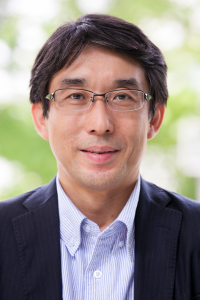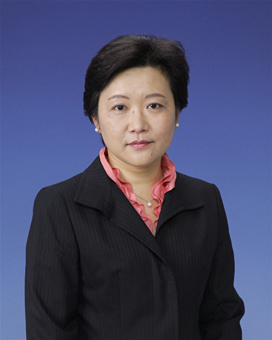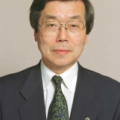How to Avoid Making Japan’s Equivalent of the NIH a Pie in the Sky Idea

SAKURA Osamu, Ph.D.
Professor at the Interfaculty Initiative in Information Studies, University of Tokyo
©AOKI Noboru
The concept for Japan’s equivalent of the NIH has been making progress and is becoming a reality. Although the standards for both Japan’s basic research and its clinical treatment technologies are high, the functions that bridge these two sectors are noticeably inadequate. Consequently, when Japan adopts new treatment methods, it often has no choice but to rely on foreign technologies that are especially from the United States. This has led to detrimental results, including a high royalty burden and a delay in the adoption of new treatments. One reason for this situation is a vertically segmented administration system in which the Ministry of Education, Culture, Sports, Science and Technology oversees basic research and the Ministry of Health, Labour and Welfare oversees clinical treatments, while the Ministry of Economy, Trade and Industry oversees industrial applications. It is clearly necessary to do away with this system and develop a system where all activities from basic research to industrial applications are managed in an integrated manner. If a Japanese NIH can achieve this goal, it would be a very welcome development.
However, to ensure that the Japanese NIH functions effectively, instead of just being a pie in the sky idea, there are several hurdles that must be cleared. Concerns have been raised over the small scale of its budget compared with the NIH in the United States, the model for the Japanese NIH. These concerns have a point, but it isn’t easy to increase budgets. Therefore, this report will explain the issues regarding the system and its management that are a little easier to tackle.
The NIH in the United States, which also conducts both of basic and clinical researches, is the collective entity for the country’s research institutions. It is made up of twenty-seven advanced institutes and centers, including the National Cancer Institute and the National Human Genome Research Institute. NIH stands for “National Institutes of Health,” but I believe that, based on its actual activities, it is more like a research organization with the function of funding agencies. It is clear that a research organization of this scale cannot be created overnight.
Therefore, my opinion is that it would be more consistent with Japan’s present situation if a Japanese NIH were developed based on a model in a country with a system a little closer to the Japanese system. Like the one in Canada, for example. In Canada, the Canadian Institutes of Health Research (CIHR), Canada’s equivalent of the NIH, administrates the promotion of life science research. The CIHR differs from the NIH in the United States in that the CIHR doesn’t have its own research organizations and is made up of a network of researchers who belong to Canada’s national universities and research institutes. Its annual budget is approximately C$1 billion (approximately \100 billion), about one-thirtieth of that of the NIH in the United States (which is approximately \3 trillion). As the budget set aside for Japan’s NIH by the Ministry of Education, Culture, Sports, Science and Technology is reportedly \65 billion, in terms of budget scale alone, Japan’s NIH is more similar to the one in Canada.
Despite the budget level, Canada’s standard for life sciences isn’t low at all. While it is naturally less robust than that in the United States, by efficiently using both human and financial resources that are not particularly large, in certain fields Canada has achieved the best results in the world. For example, in 2013, Canada published the most research papers in the world in neuroethics, an emerging field that studies the relationship between brain science and society, and which was only established over the last decade. Canada achieved this because when Dr. Rémi Quirion was the director of the Institute of Neurosciences, Mental Health and Addiction of the CIHR, he was determined to concentrate the budget distribution in this field.
I recently had the opportunity to interview Dr. Quirion (currently Chief Scientist of the Province of Québec). In the interview, he explained the following three points as being useful for the management of Japan’s NIH. First, it is essential to develop a field that seriously studies the relationship between scientific technologies and society. What is required of the members of the organization that determines the distribution of research subsidies is not to act as representatives of the interests of specific academic fields; rather, they must have a broad vision and extensive knowledge of the state of society, and support those academic fields that are necessary for society.
Second, the selection and policies of research fields must be determined at the discretion of experts in the relevant fields. Dr. Quirion is a neuroscientist, and he was convinced that Canada could beat the United States in neuroethics, an emerging field. That is apparently why he decided to invest resources in this field. Only experts can determine the actual situation regarding their relevant research fields, the level of the relevant research in Japan, and the position and characteristics of the relevant research in Japan compared with the relevant research overseas. If politicians or bureaucrats are in charge of managing the selection of research fields and their progress, that could potentially hinder the progress of research.
Third, a chief officer who oversaw the neuroethics field was externally selected through open recruitment. The CIHR publicly called for plans under the condition that a new neuroethics research center would be established by inviting new chairperson and staff members from outside, instead of allocating the research budget to existing university laboratories or research organizations. Canadian woman who was at the United States then was selected as the chair, and since then, as the center for neuroethics in Canada, this research center at the University of British Columbia has been promoting the neuroethics field. What is necessary to strengthen new academic fields is not to support projects that have mainly been created by existing research organizations or researchers, but to develop brand-new research systems, even recruiting foreign staff members if necessary. Decisions on what kind of human resources are necessary and what kind of systems need to be developed can again only be made by experts with far-reaching views. Universities and independent administrative corporations also must flexibly deal with new organizations.
Needless to say, the Canadian way is not completely satisfactory, but its situation is similar to that of Japan in two regards: the scale of its budget, which is far smaller than that of the United States, and the fact that the CIHR is made up of a network of researchers instead of having its own research organizations. There must be many things that Japan can learn from Canada.
It isn’t possible to immediately secure research budgets and research facilities on par with those in the United States. Still, what is required is not the development of a quasi NIH, but the comprehensive promotion of Japan’s medicine and life sciences. I believe that Canada’s success in neuroethics will provide Japan with insight into a governance method for determining the most suitable strategies and policies.
Note: Taking the National Institutes of Health (NIH) in the United States as a model, the Headquarters for Healthcare and Medical Strategy Promotion of the Japanese government aims to strengthen its ability to develop cutting-edge medical technologies. (Head of the Headquarters: Prime Minister Abe Shinzo).
Translated from an original article in Japanese written for Discuss Japan. [November 2013]
SAKURA Osamu, Ph.D.
Professor at the Interfaculty Initiative in Information Studies, University of Tokyo
Born in 1960. Earned his Ph.D. in 1992 from Kyoto University. Recent activities include the popularization of science for those without background knowledge. Served as Associate Professor at Yokohama National University (1993–2000) and Visiting Researcher at Freiburg University (1995–96). Has served as Advisory Board member of the academic journal Biology and Philosophy since 1998.
His publications include “Kagaku no yokomichi (Casual dialogues around science and society),”” Benri wa hito o fukou ni suru (Convenience makes people unhappy,” “Watashitachi wa dokokara kite dokoe yukunoka? (Where did we come from and where are we going?)” and “Shinkaron no chosen (A challenge of evolutionary theory).”


